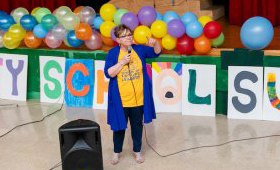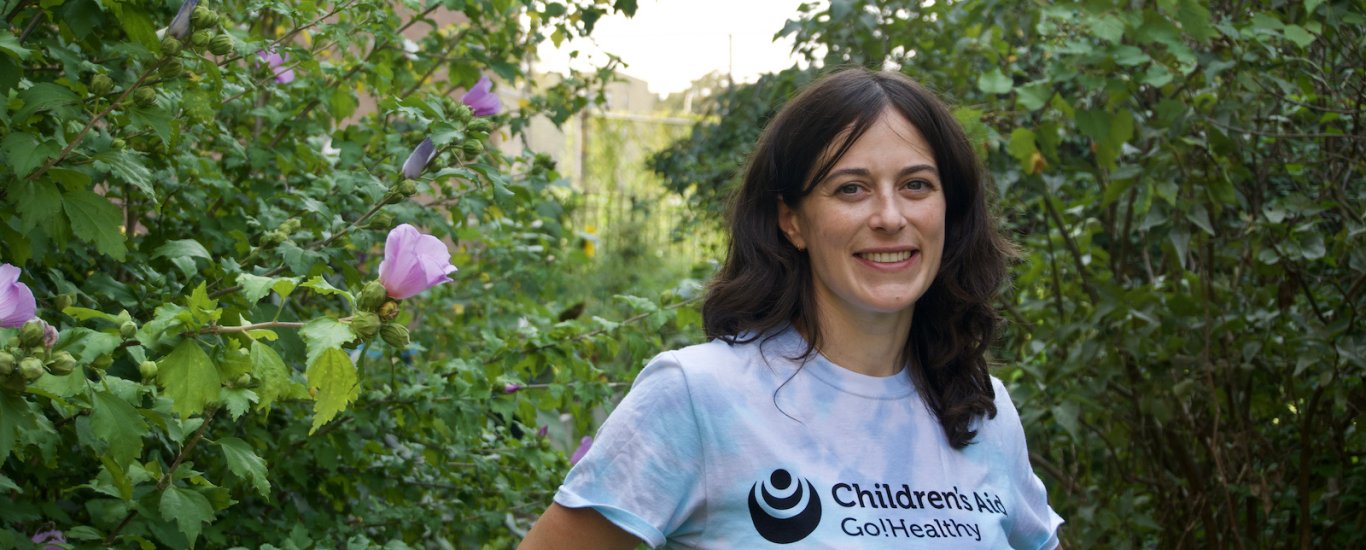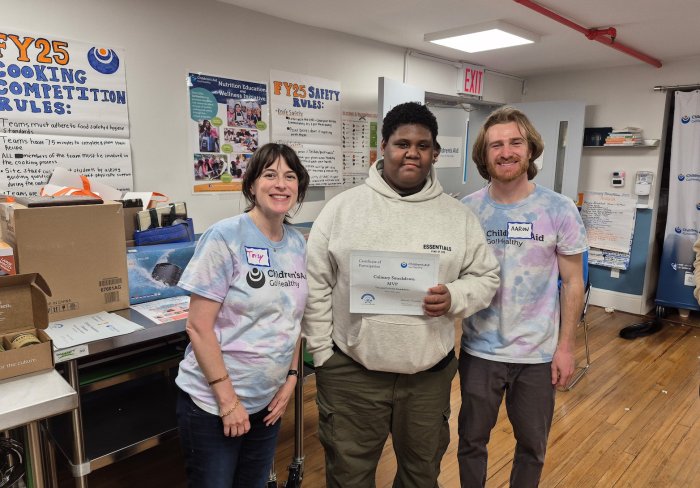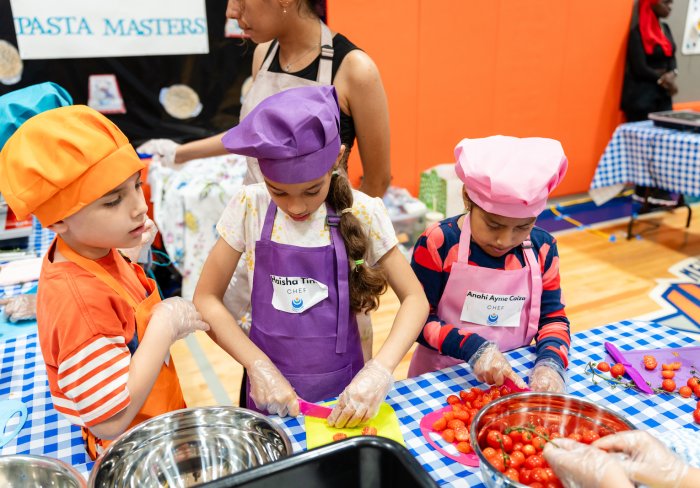Our Director of Food and Nutrition Programs, Taisy Conk, breaks down the causes of and solutions for food insecurity in NYC.
What are the main contributing factors to food insecurity in New York City?
People go hungry every day even though our land provides enough calories for all. From both a historic and global lens, those in power use hunger as a weapon of war or tool of oppression. The modern global economy is dependent on scarcity and competition. Food is not upheld as a human right. Right to food is restricted based on identity, and when it is granted, it may be highly regulated or policed. This is particularly true in marginalized communities like the ones we serve at Children’s Aid. An instance of food insecurity in colonial New York City occurred when the colonists banned foraging specifically because this was a main form of sustenance for the native Lenape people. Policies such as redlining leave a major mark on health disparities and food insecurity in the city today, even though outwardly racist or classist policies are no longer accepted. The housing crisis and rent burden disproportionately faced in neighborhoods such as the South Bronx means that residents have to choose between paying rent and purchasing groceries or a hot meal. Smaller chains like those that dominate in New York City neighborhoods cannot compete with big retailers such as Walmart due to grocery-retailer and food chain corporate consolidation. Food prices for our families are dramatically higher as a result not only of inflation, but of the food industry’s drive to increase profits.
What steps can New York City leaders take to tackle the issue?
Many of the levers to address food insecurity and child poverty are at the state and national level, including the Farm Bill and Child Nutrition Reauthorization bills, as well as the tax code and childcare funding. New York City policy makers should work on the housing crisis by expanding rent stabilization and focusing on making housing truly affordable for current residents. New York City leaders have acted to reduce food insecurity by increasing the health bucks benefit to a $2 for $2 match for customers purchasing with SNAP at farmers markets. More can be done to reduce barriers for farmers and farmers’ markets and to increase affordability for residents. In a direct response to the legacy of anti-foraging laws and to community demands, local leaders financed the creation of New York City’s first food forest. Leaders can invest in projects like this in other neighborhoods. New York City public schools now implement universal school meals to the great benefit of its students, but the Office of Food and Nutrition Services budget and popular menu items must be maintained in order to support the increase in participation.
What are we at Children’s Aid doing to ensure that New York City children and families have access to nutritious food?
Go!Healthy integrates its food and nutrition programs into Children’s Aid centers and schools. Go!Healthy combines hands-on food education with access to fresh, healthful, and culturally relevant food. One example of an integrated approach is the SNAP-Ed fruit and vegetable prescription (FVRx) program. The Early Childhood Division needs assessment includes a food insecurity screening. When families screen positive, Family Advocates offer them the opportunity to participate in FVRx, through which they receive a box of seasonal fruits and vegetables and participate in a class with our nutritionists for six weeks. We hope to implement this program next in our health clinics, creating referral systems for prescriptions and leveraging funding for the social determinants of health. Given the realities I describe above, Go!Healthy and even Children’s Aid could never do enough alone. I am grateful for my colleagues across the agency who set aside a meal for a child who is not getting enough food at home or who walk a pregnant mother home to carry her groceries. Our model is based in finding creative solutions to support families’ comprehensive needs, “every step of the way.” Finally, Go!Healthy and Children’s Aid participate in coalition work to tackle complex problems with policy and systems solutions. The NYC Food Policy Alliance developed the asks we uplift as an organization.







